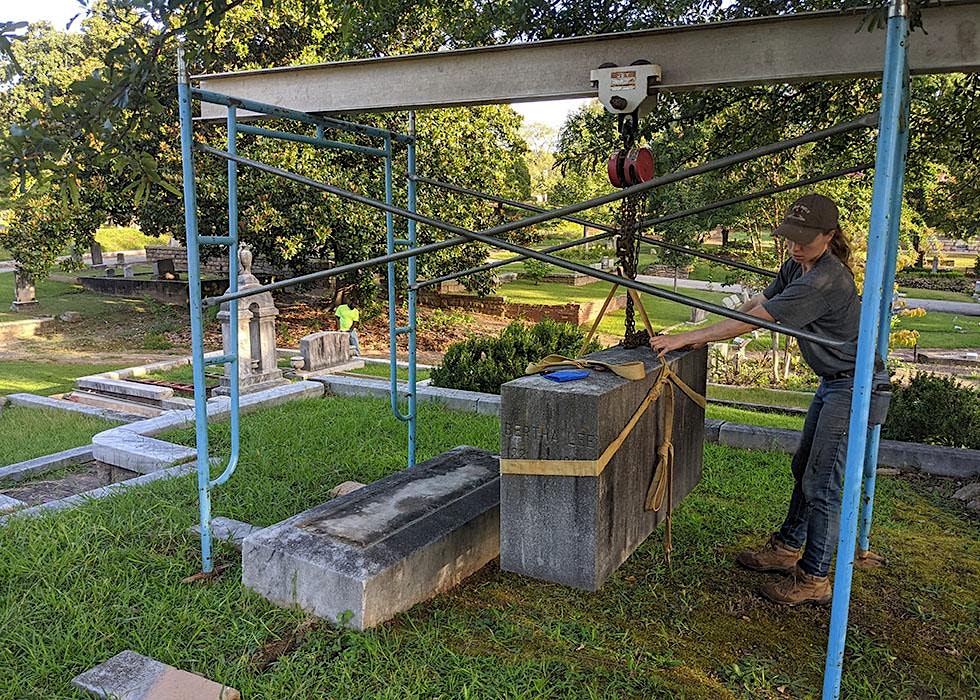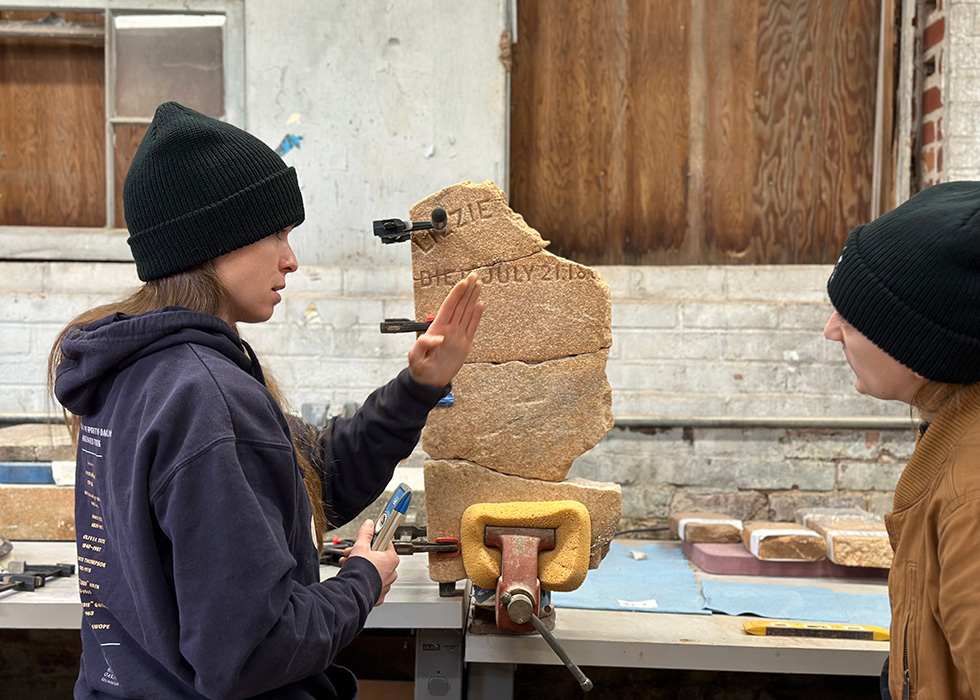
Preservation Team to Study Graffiti Removal Techniques
When the topic of vandalism in public places comes up, one of the first things we think of is graffiti. And for good reason—you cannot go very far in a major city without noticing some form of it. Cemeteries are no exception. One well-known and re-occurring example is the repeated vandalism of the tomb believed to belong to Marie Laveau in New Orleans. Oakland Cemetery has seen its fair share, too.
Over the years, Oakland has experienced a few occurrences of graffiti. These occurrences have been both targeted (protest language on the Confederate Obelisk and Lion of Atlanta) and random (spray painted mausoleum doors with no discernable symbols or words). Fortunately, Oakland Cemetery experiences relatively little vandalism within its gates. That can make us a bit complacent, however, so that when we do encounter graffiti, we don’t have a standard, effective protocol for dealing with it. But we will soon.
This summer I will be working to determine the best courses of treatment to remove graffiti from our main stone types: brick, marble, granite, and concrete. With the help of an intern from UGA, Alyza Surani, I will test a number of cleaning methods for removing oil-based spray paint, water-based paint, sharpie marker, lipstick and other cosmetics, and pencil. Rather than testing on actual headstones, we will use historic stone, such as bricks that were salvaged from pathway rehabilitation efforts on East Hill and scraps of marble that were used as filler materials behind walls.
The study will run from June to mid-July, allowing several weeks for the graffiti to set into the stones and creating an artificial “worst-case scenario” for us. The goals of the study are first, to create a treatment protocol that we can quickly follow in the event of future vandalism, and second, to determine the best path forward for existing graffiti on our walls.



